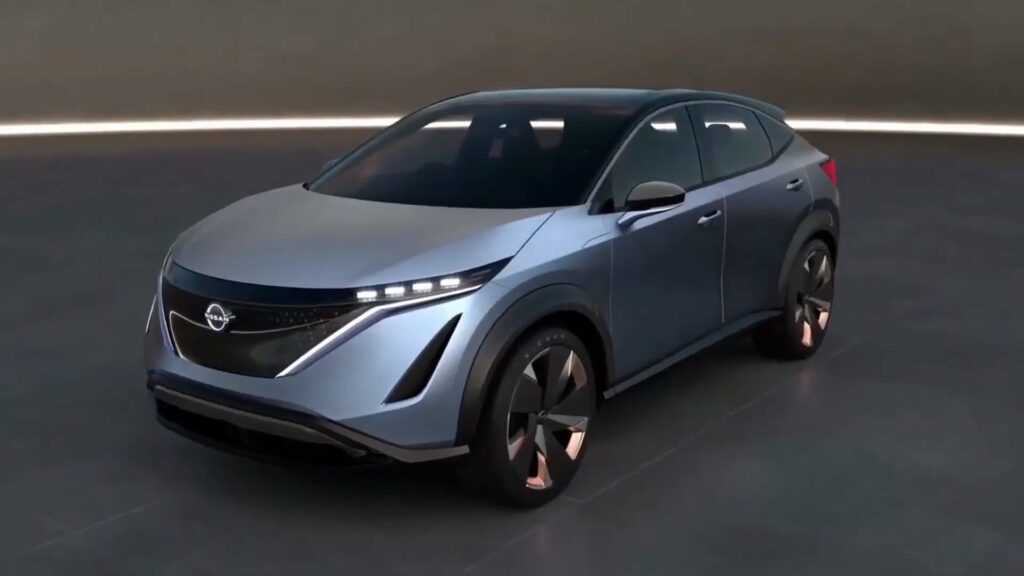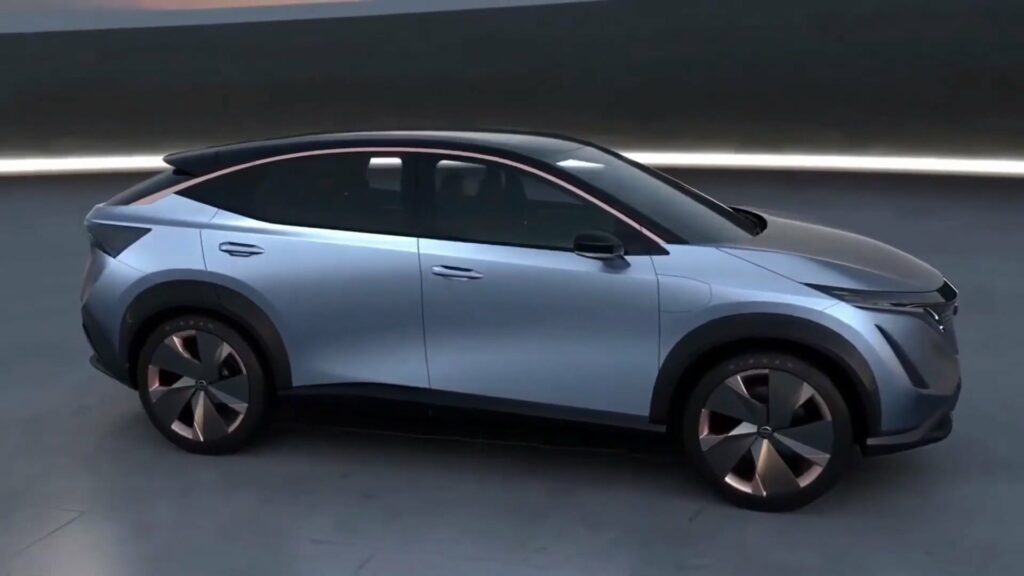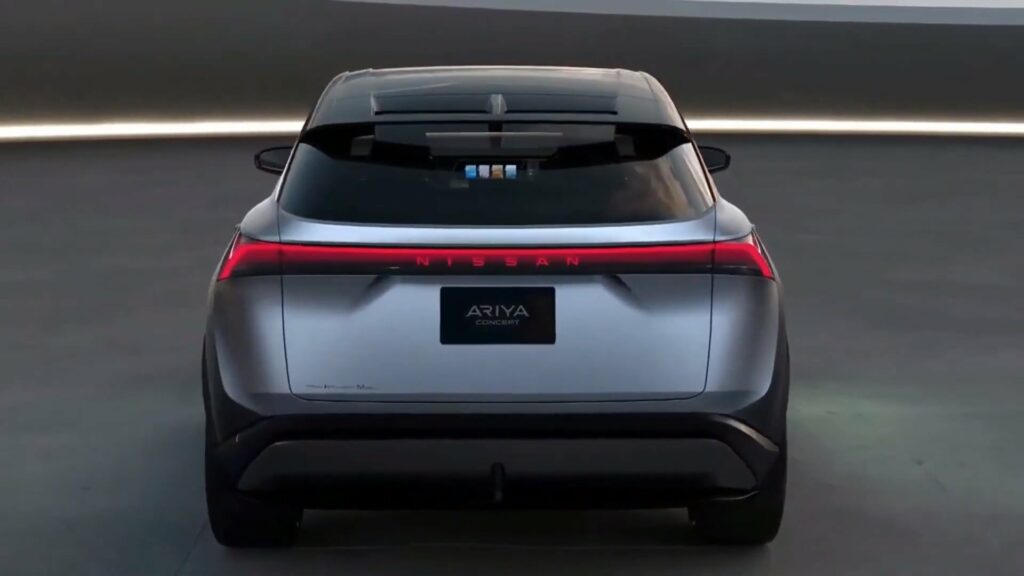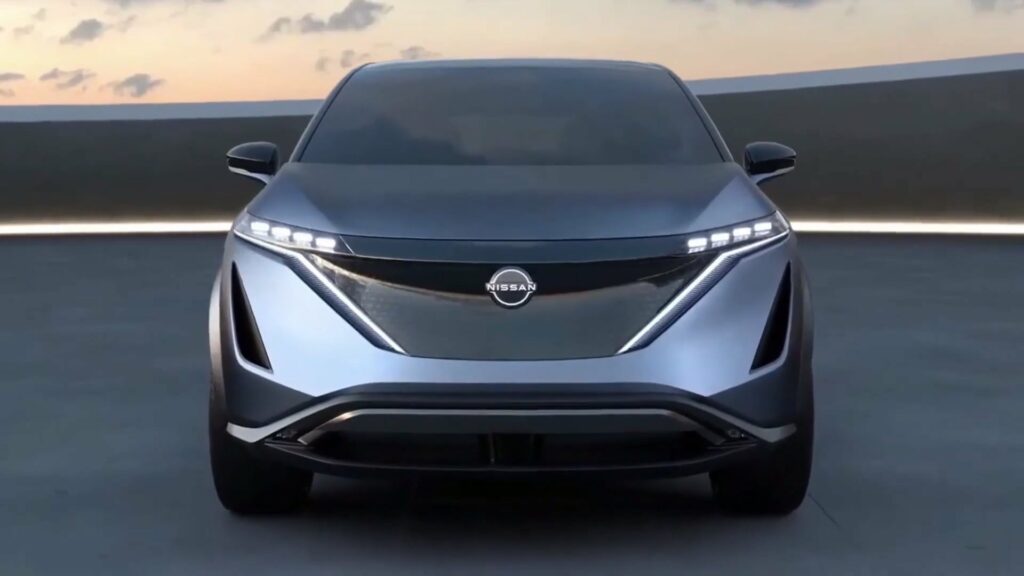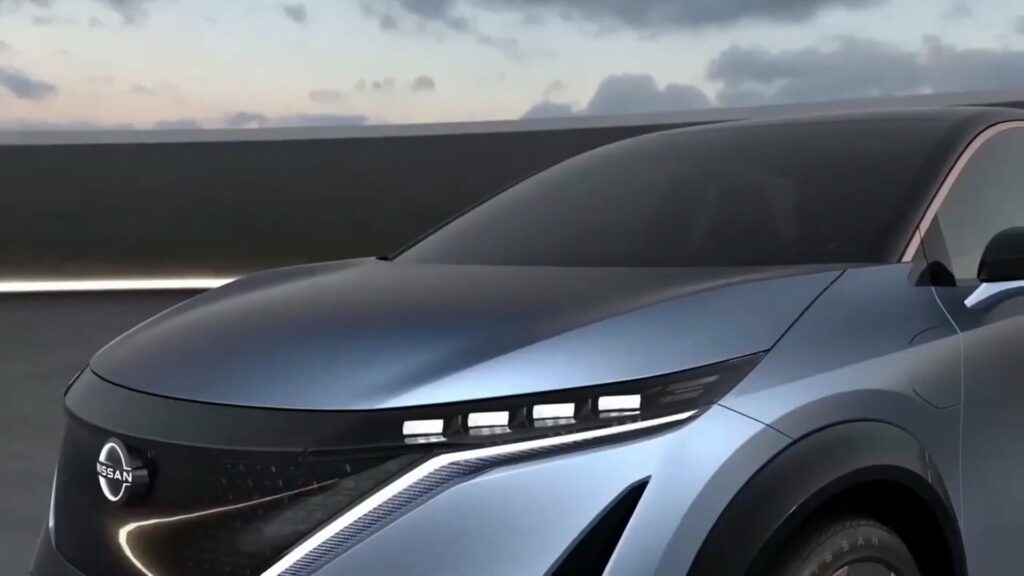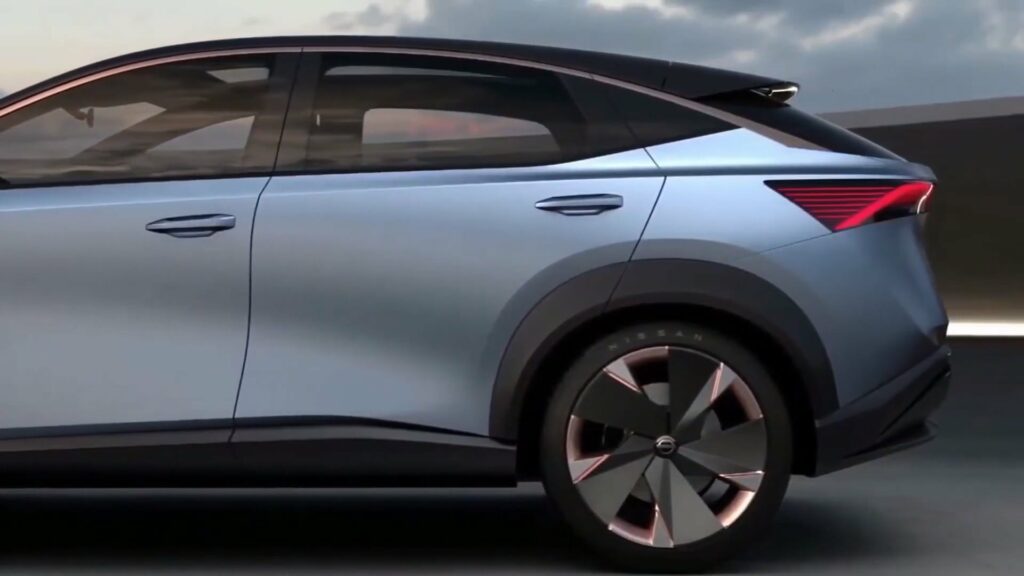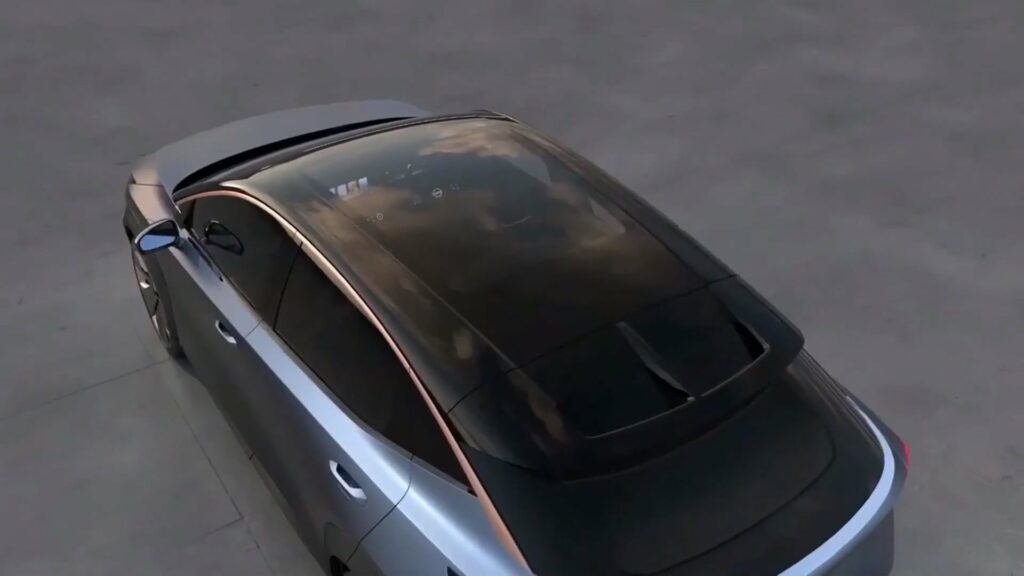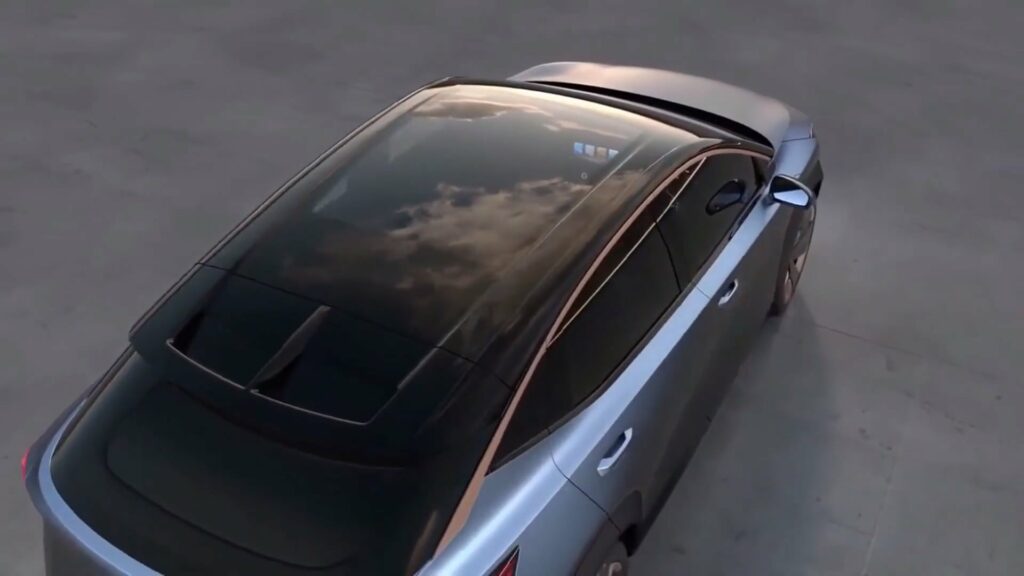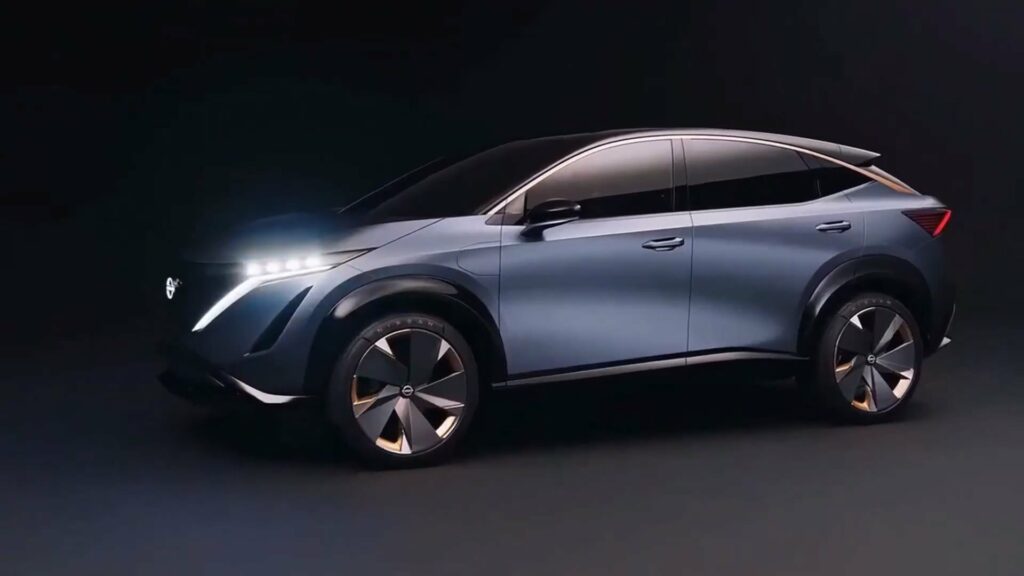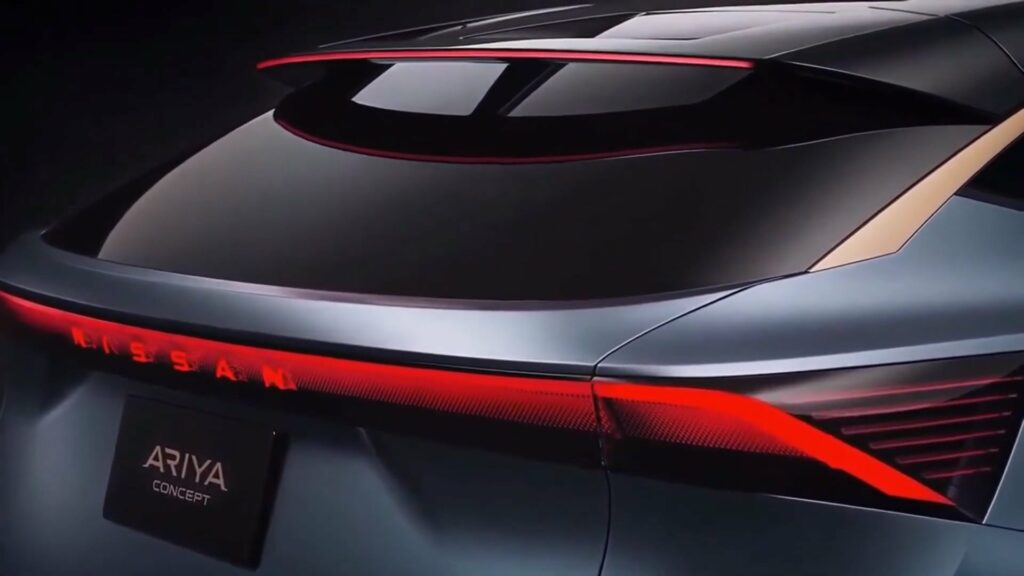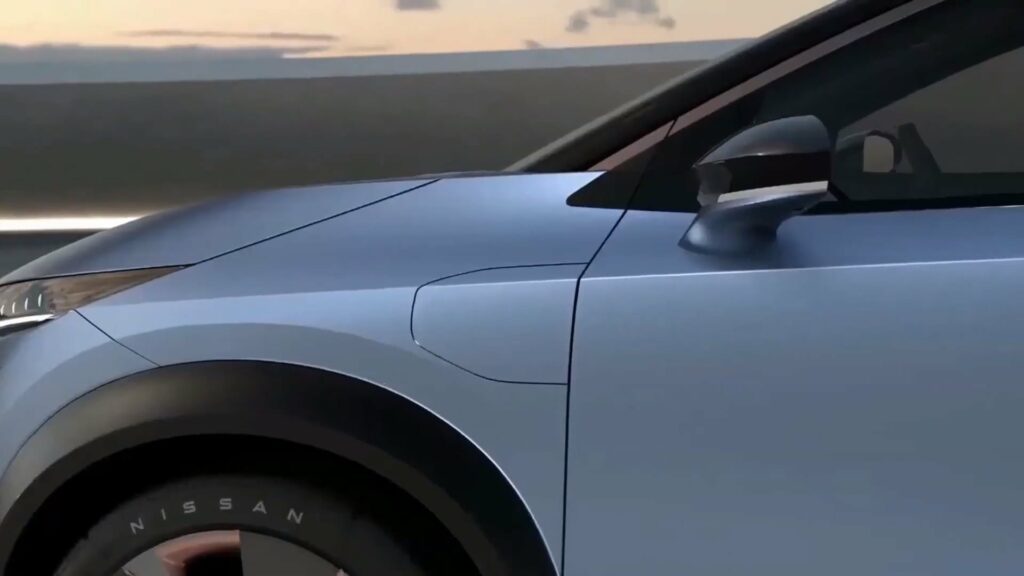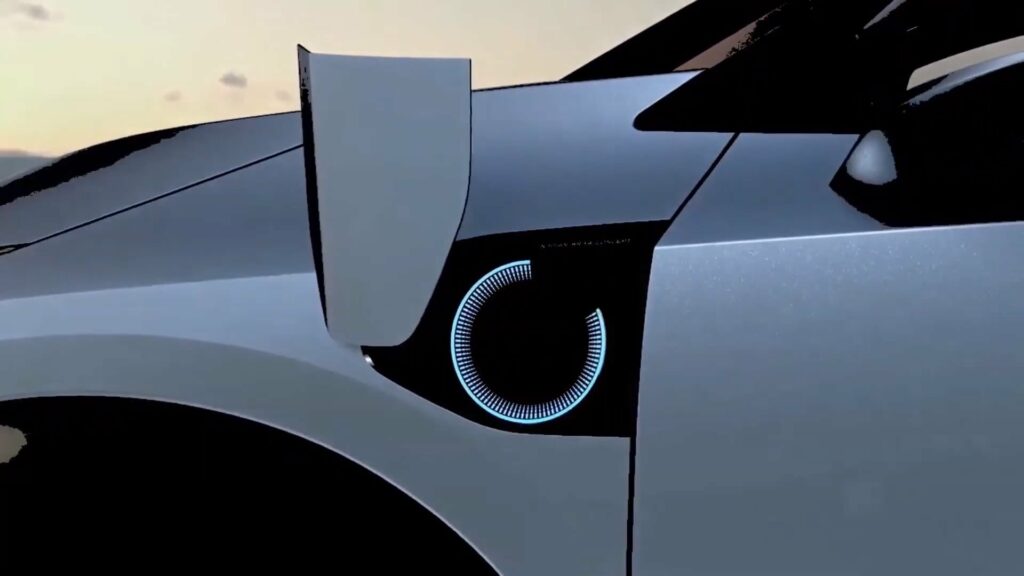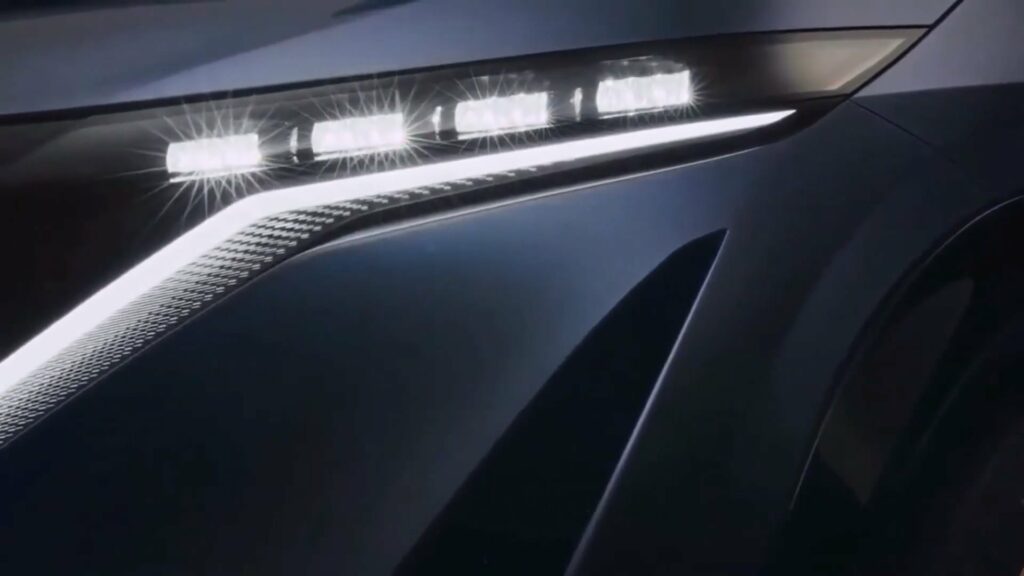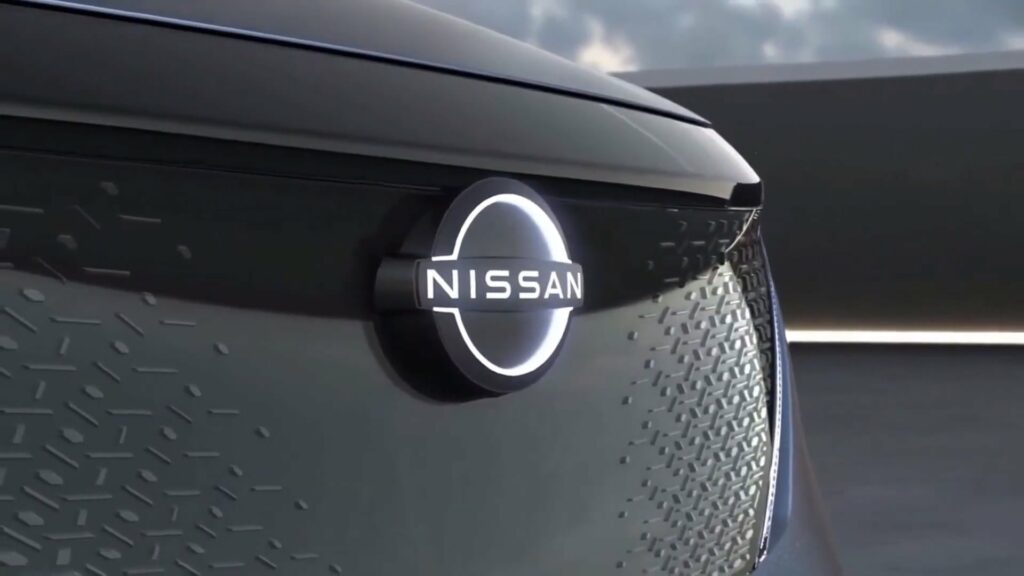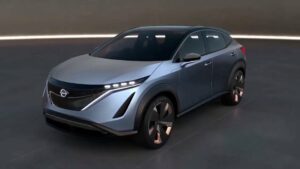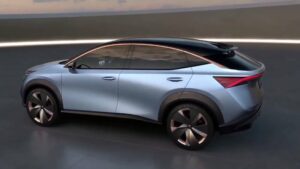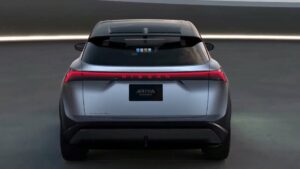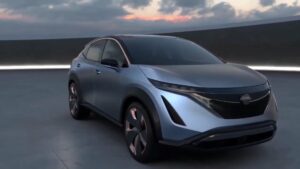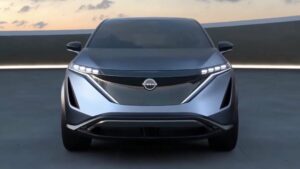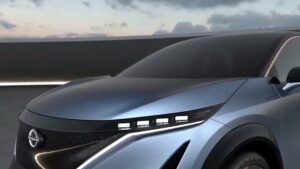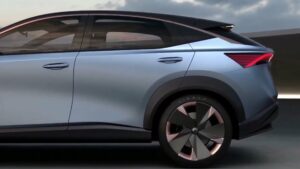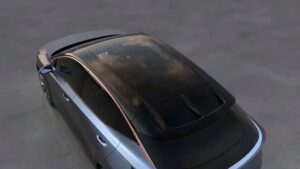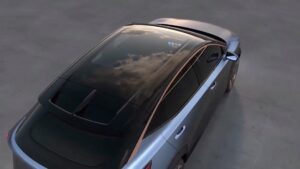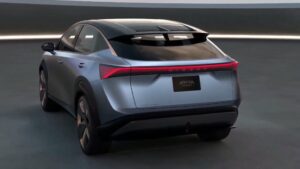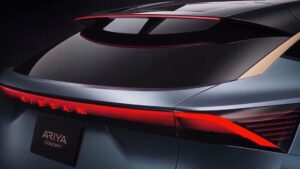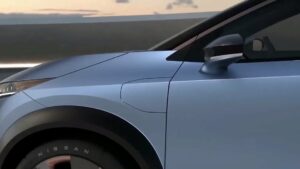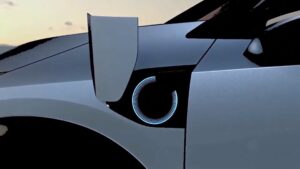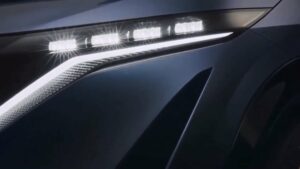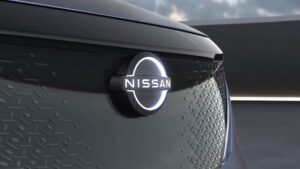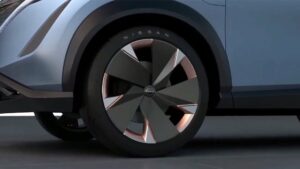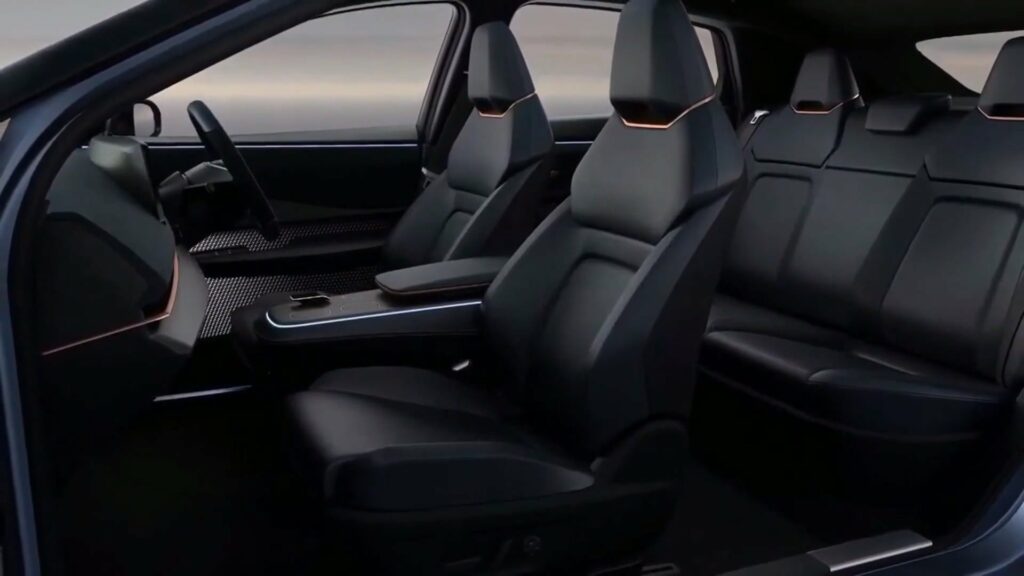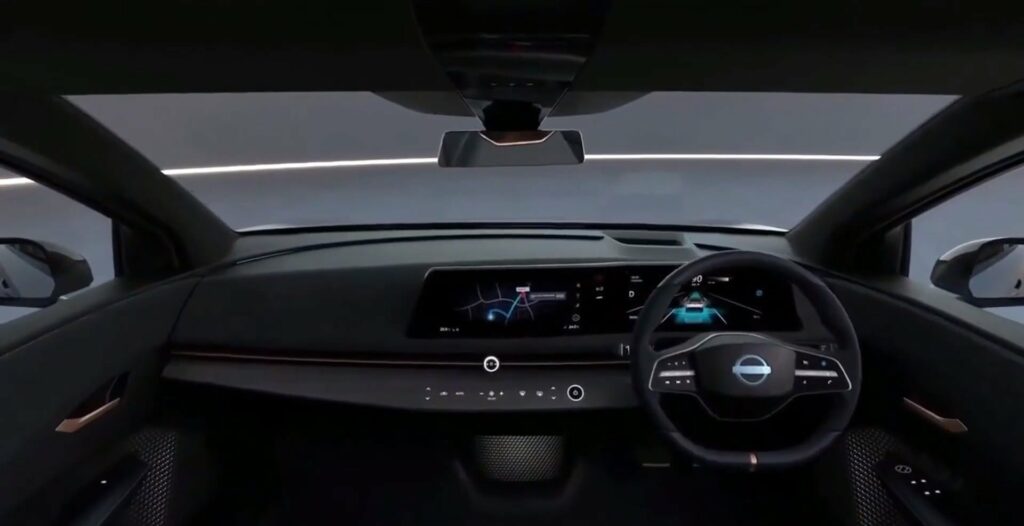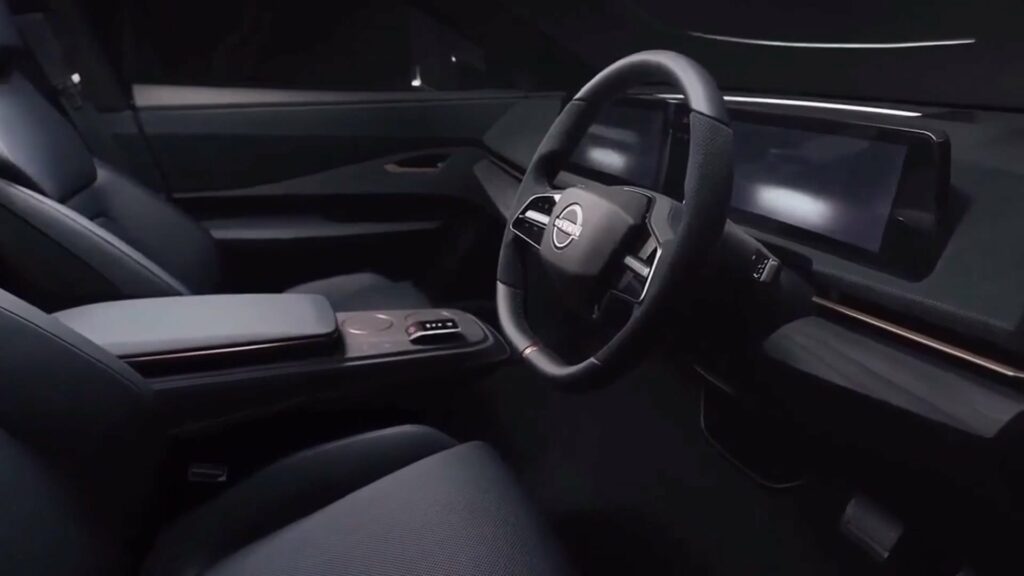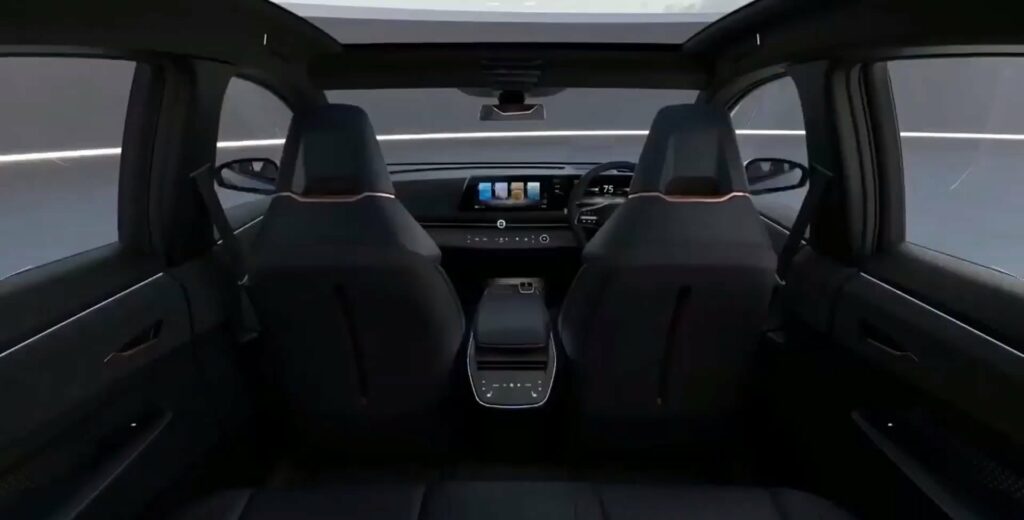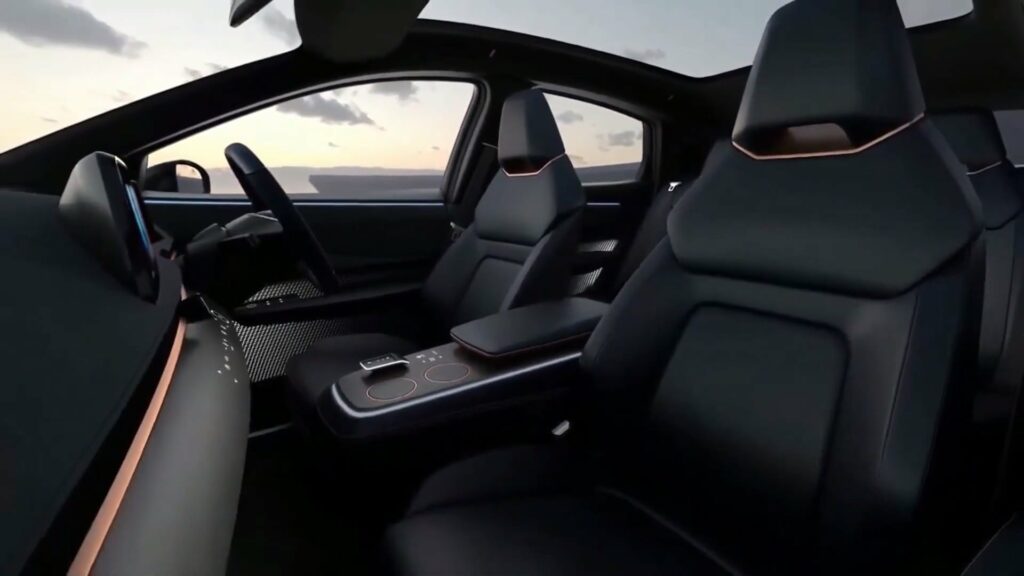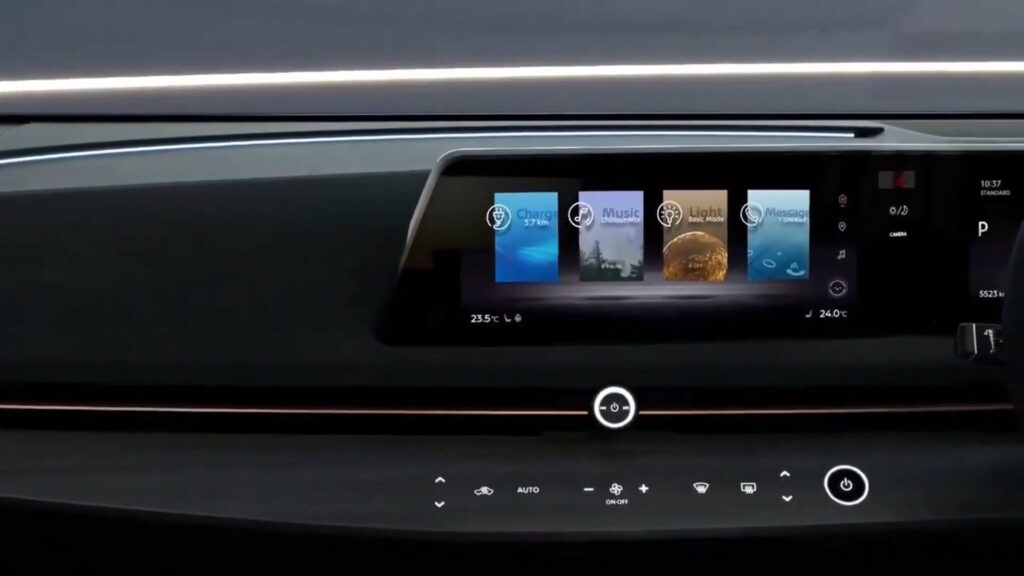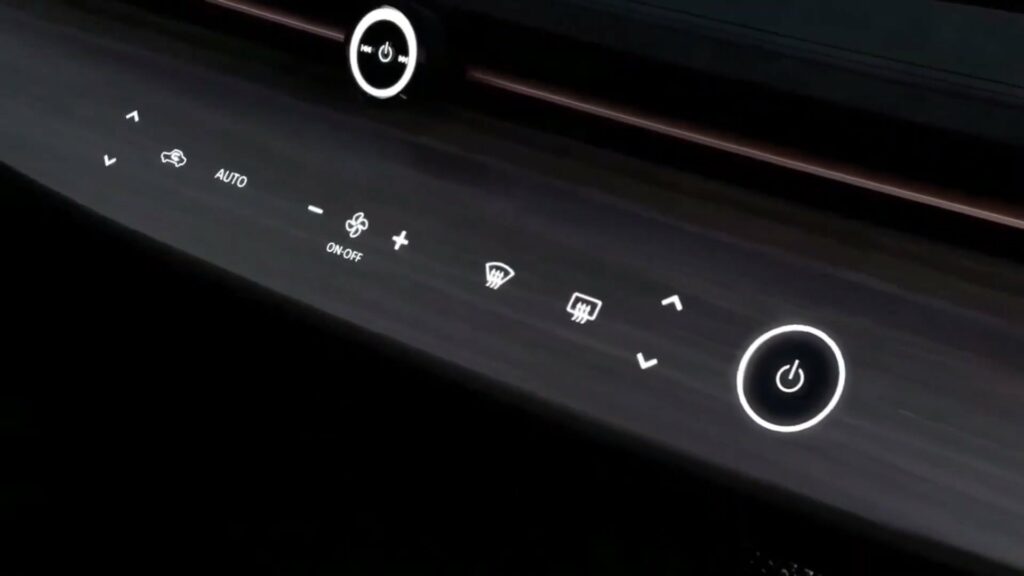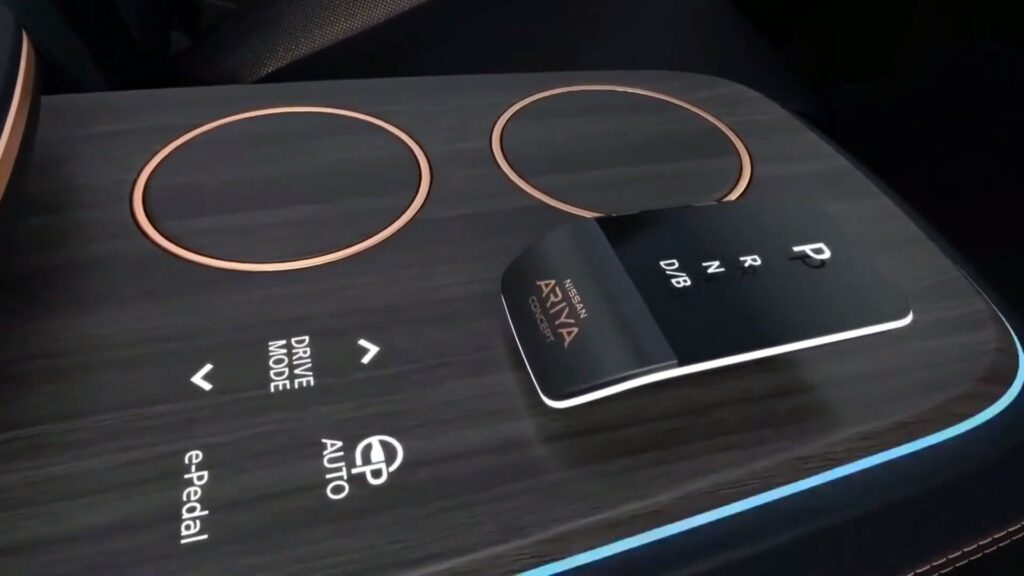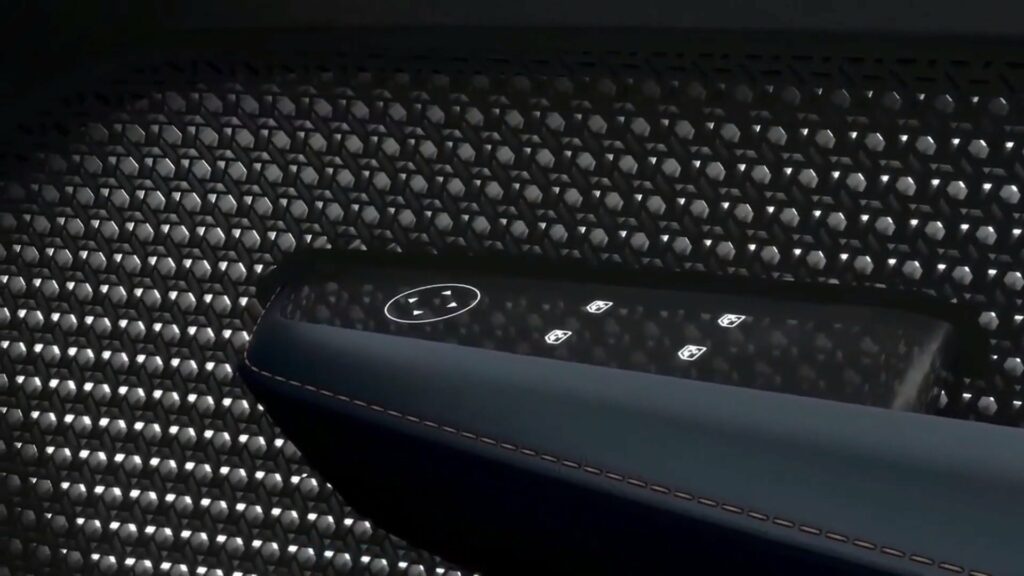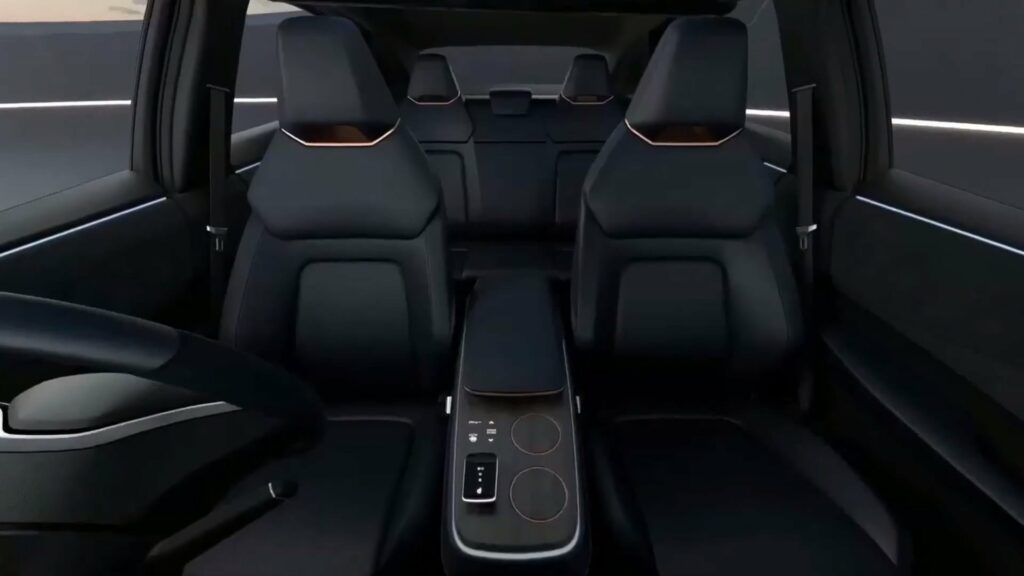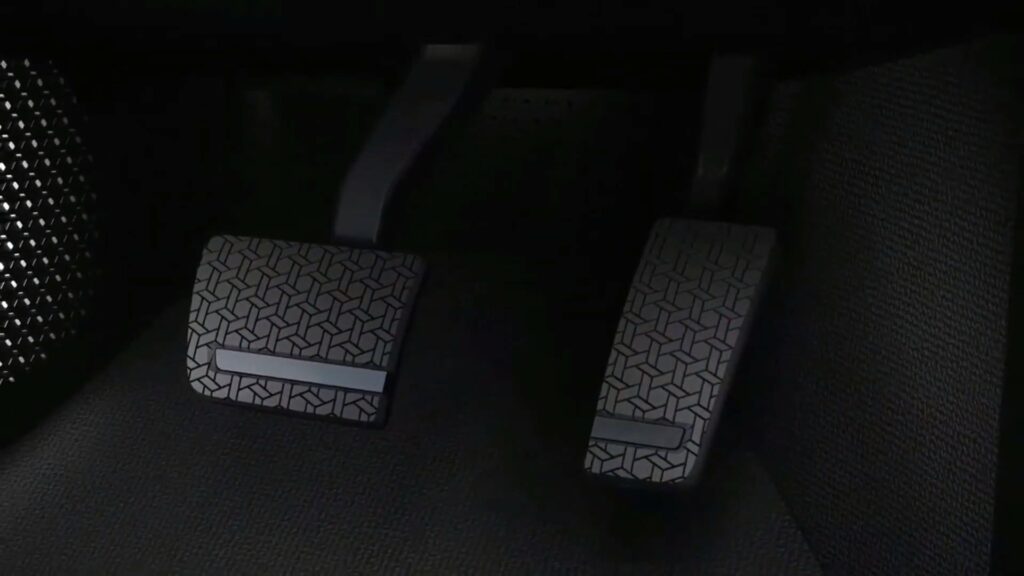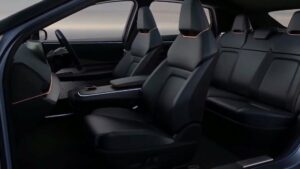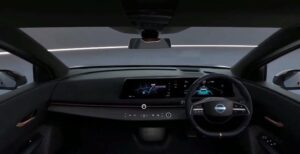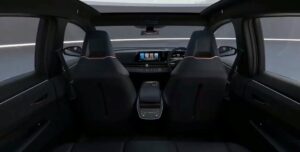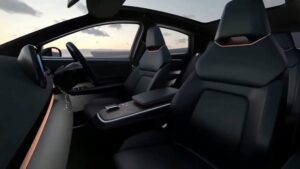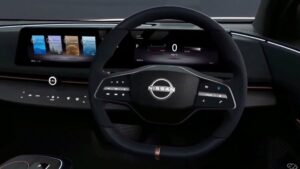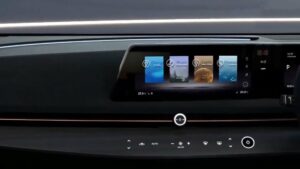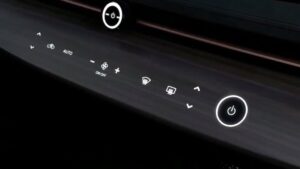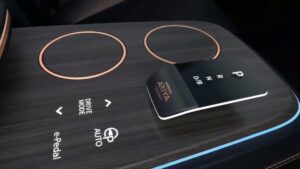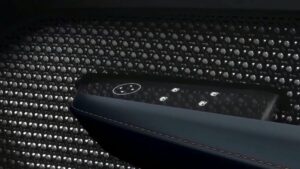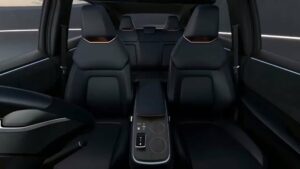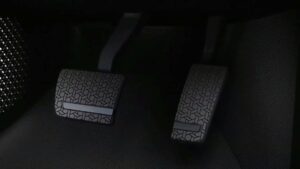Nissan Ariya e-4ORCE 87kWh Performance
The Nissan Ariya e-4ORCE 87kWh has impressive performance thanks to its electric drivetrain and all-wheel drive system. The car is equipped with two electric motors, one on the front axle and one on the rear axle, which work together to provide all-wheel drive and fast acceleration.
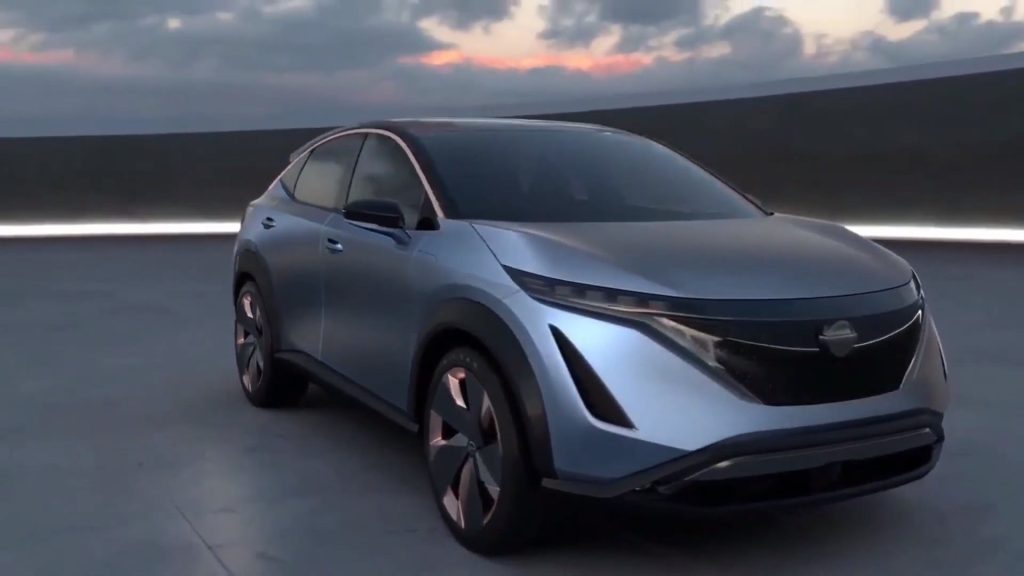
The Ariya’s motors deliver a combined 290 horsepower, and 600 Nm of torque, enabling the car to accelerate from 0 to 100 km/h (60 mph) in about 5.1 seconds. That’s a pretty impressive figure for an SUV, especially an all-electric one.
In addition to fast acceleration, the Ariya also offers precise handling and stability thanks to the e-4ORCE all-wheel-drive system. The system uses advanced software to control and adjust power distribution between the front and rear wheels, allowing the vehicle to maintain optimal traction and stability in all driving conditions.
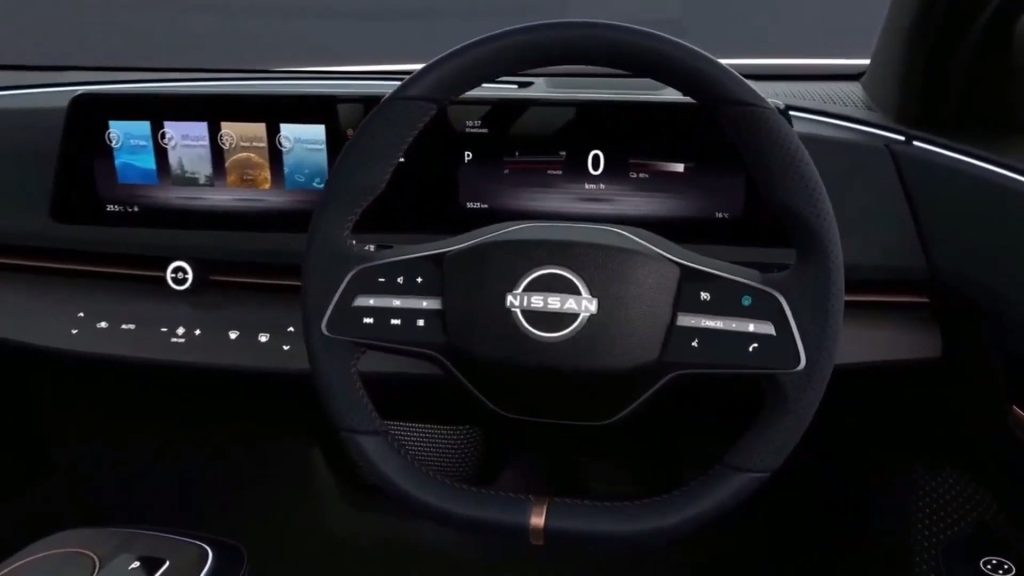
The Ariya electric drivetrain also provides smooth and quiet operation, making driving a comfortable and enjoyable experience. The vehicle has a range of up to 385 km on a single charge, which is one of the largest of any electric vehicle on the market.
Overall, the Nissan Ariya e-4ORCE 87kWh offers impressive performance and driving dynamics, making it an attractive option for those looking for an all-electric SUV with power and range.
| Performance | |
| Acceleration 0 – 100 km/h | 5.1 sec |
| Top Speed | 200 km/h |
| Electric Range | 385 km |
| Total Power | 290 kW (394 PS) |
| Total Torque | 600 Nm |
| Drive | AWD |
| Battery and Charging | |
| Battery Capacity | 90.0 kWh |
| Battery Useable | 87.0 kWh |
| Europe | |
| Charge Port | Type 2 |
| Charge Power | 22 kW AC |
| Charge Time (0->385 km) | 4h45m |
| Charge Speed | 83 km/h |
| Fastcharge Port | CCS |
| Fastcharge Power (max) | 130 kW DC |
| Fastcharge Time (39->308 km) | 35 min |
| Fastcharge Speed | 460 km/h |
| Energy Consumption | |
| EVDB Real Range | |
| Range | 385 km |
| Vehicle Consumption | 226 Wh/km |
| CO2 Emissions | 0 g/km |
| Vehicle Fuel Equivalent | 2.5 l/100km |
| WLTP Ratings | |
| Range | 400 km |
| Rated Consumption | No Data |
| Vehicle Consumption | 218 Wh/km |
| CO2 Emissions | 0 g/km |
| Rated Fuel Equivalent | No Data |
| Vehicle Fuel Equivalent | 2.4 l/100km |
|
Rated = official figures as published by manufacturer. Rated consumption and fuel equivalency figures include charging losses.
|
|
|
Vehicle = calculated battery energy consumption used by the vehicle for propulsion and on-board systems.
|
|
| Real Energy Consumption Estimation between 157 – 316 Wh/km | |
| City – Cold Weather * | 223 Wh/km |
| Highway – Cold Weather * | 316 Wh/km |
| Combined – Cold Weather * | 264 Wh/km |
| City – Mild Weather * | 157 Wh/km |
| Highway – Mild Weather * | 252 Wh/km |
| Combined – Mild Weather * | 202 Wh/km |
| Energy use for each trip will vary considerably depending on the driver and the conditions. Therefore, we have provided a range of estimates which can be useful in developing an understanding of the potential benefits of this technology. | |
| Dimensions and Weight | |
| Length | 4595 mm |
| Width | 1850 mm |
| Width with mirrors | No Data |
| Height | 1660 mm |
| Wheelbase | 2775 mm |
| Weight Unladen (EU) | 2300 kg |
| Gross Vehicle Weight (GVWR) | No Data |
| Max. Payload | No Data |
| Cargo Volume | 415 L |
| Cargo Volume Max | No Data |
| Cargo Volume Frunk | No Data |
| Roof Load | No Data |
| Tow Hitch Possible | Yes |
| Towing Weight Unbraked | No Data |
| Towing Weight Braked | 1500 kg |
| Vertical Load Max | No Data |
| Miscellaneous | |
| Seats | 5 people |
| Isofix | No Data |
| Turning Circle | No Data |
| Platform | RNM CMF-EV |
| Car Body | SUV |
| Segment | JC – Medium |
| Roof Rails | No Data |
| EV Dedicated Platform | Yes |
Home and Destination Charging (0 -> 100%)
A public charging station is required to use the highest possible charging rate. The EVSE/charging station’s charging capacity affects how long it takes to fully charge the battery. The table below shows all possible options for fully charging the Nissan Ariya e-4ORCE 87kWh Performance.
In Europe, plugging an electric car into an outlet is often as easy as plugging it into a household outlet, but there are differences from country to country. The table below shows the different ways to charge the Nissan Ariya e-4ORCE 87kWh Performance, but in some countries some chargers may not be available.
Type 2 ( IEC 62196)

| Charging Point | Max. Power | Power | Time | Rate |
| Wall Plug (2.3 kW) | 230V / 1x10A | 2.3 kW | 44h30m | 9 km/h |
| 1-phase 16A (3.7 kW) | 230V / 1x16A | 3.7 kW | 27h45m | 14 km/h |
| 1-phase 32A (7.4 kW) | 230V / 1x32A | 7.4 kW | 14 hours | 28 km/h |
| 3-phase 16A (11 kW) | 400V / 3x16A | 11 kW | 9h30m | 41 km/h |
| 3-phase 32A (22 kW) | 400V / 3x32A | 22 kW | 4h45m | 81 km/h |
Fast Charging (10 -> 80%)
If you want to enjoy driving an electric car, one of the most important features to consider is the number of miles per hour the car can travel while charged. This is called the “range” of the car. All electric cars have a certain range, even if they are 100% charged. This is because they do not have an internal combustion engine to lean on if you need to drive a long distance.
Max. Power: The maximum power provided by the charging point
Avg. Power: The average power provided by the charging point during a session of 10% to 80%.
Time: the time it takes to charge from 10% to 80%
Speed: the average charging rate during the session of 10% to 80%
Combined Charging System (CCS Combo 2)
| Charging Point | Max. Power | Avg. Power | Time | Rate |
| CCS (50 kW DC) | 50 kW | 45 kW | 85 min | 190 km/h |
| CCS (100 kW DC) | 100 kW | 85 kW | 45 min | 350 km/h |
| CCS (150 kW DC) | 130 kW | 110 kW | 35 min | 460 km/h |
| Brand | Nissan |
| Model | Ariya e-4ORCE 87kWh Performance |
| Body Style | SUV |
| Car Engine | electric |
| Motor power | 290 |
| Maximum Torque, Nm | 600 |
| Battery Energy, kWh | 90.0 |
| Power reserve (NEDC/EPA/WLTP), km | - / - / 385 |
| Level Charging (230/400/DC), hours | - / 4.45 / 0.35 |
| Electrical Acceleration, 0-100 km/h (0-62.1 mph) in sec | 5.1 |
| Top Speed, km/h | 200 |
